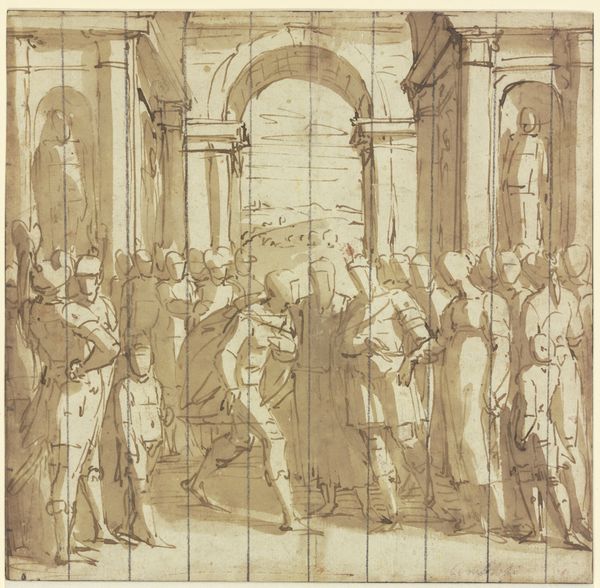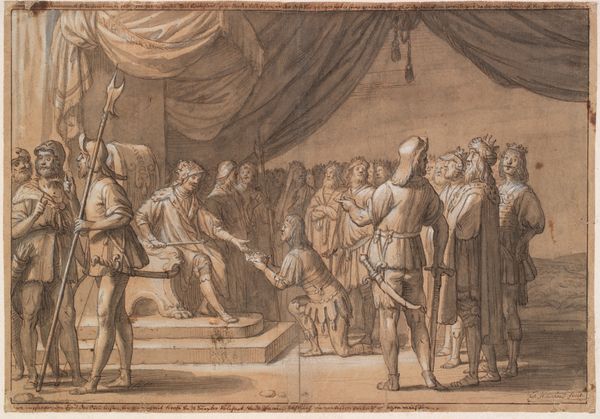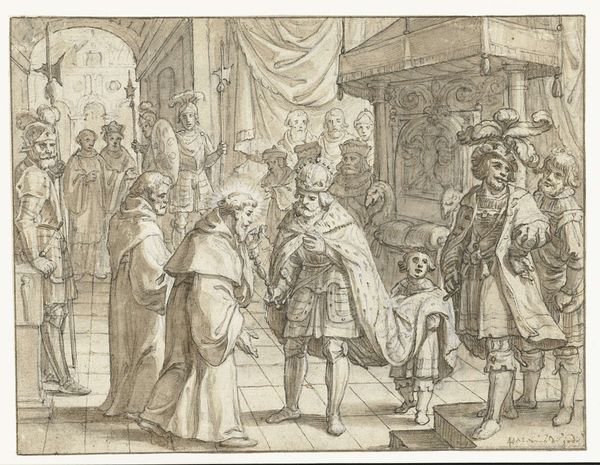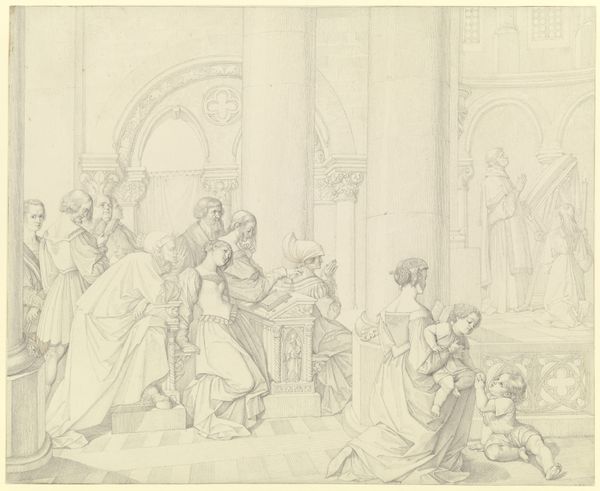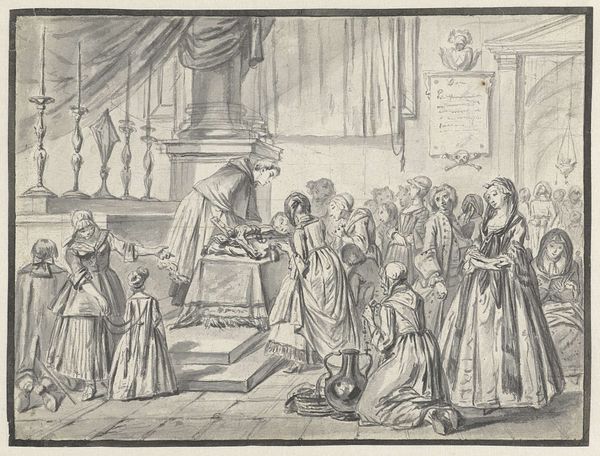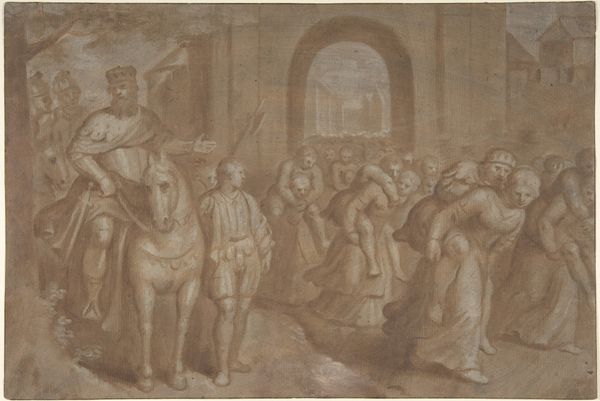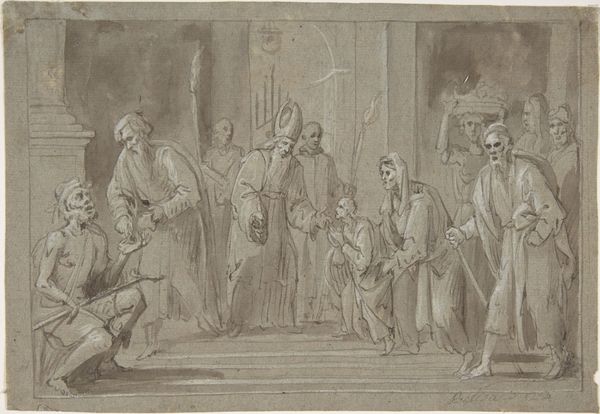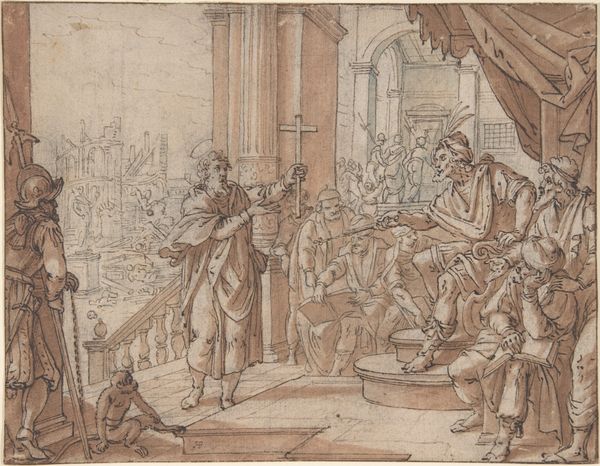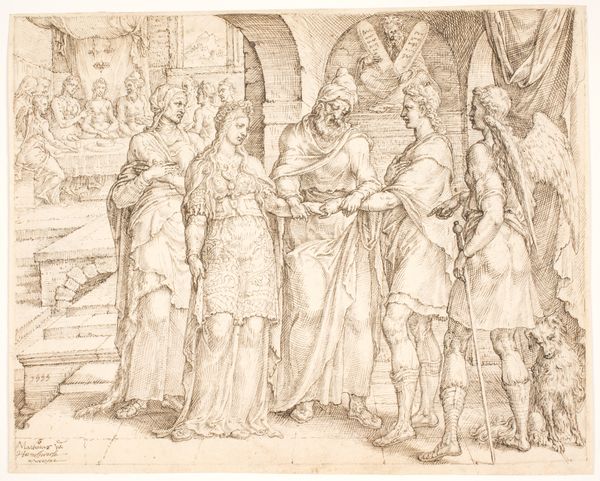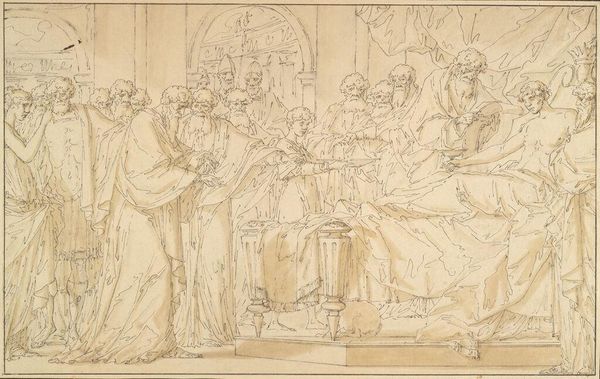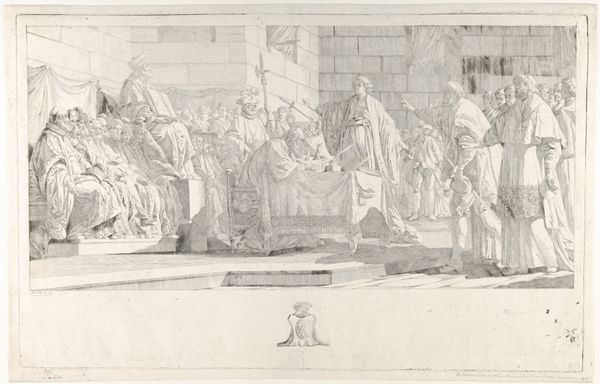
Treueschwur der spanischen Fürsten zum jungen König Philipp II. in Anwesenheit Kaiser Karls V. 1598
0:00
0:00
drawing, paper, ink, chalk
#
portrait
#
drawing
#
baroque
#
etching
#
figuration
#
paper
#
ink
#
13_16th-century
#
chalk
#
history-painting
Copyright: Public Domain
This drawing by Jacopo Chimenti, made around 1551, captures the oath of allegiance to the young King Philip II. Here, symbols of power are on full display. Note the scepter, not merely a staff, but a potent emblem of royal authority. The crown, a universal signifier of sovereignty, rests heavily on the heads of both Charles V and Philip. See how it echoes the laurel wreaths of Roman emperors, a deliberate nod to the unbroken chain of power. Consider the act of kneeling, a gesture of submission and loyalty. This motif appears in various forms throughout history. In ancient Egyptian art, conquered foes kneel before the pharaoh, and in medieval tapestries, knights kneel before their king. Though the context shifts, the underlying message remains: obedience to a higher power. The visual language speaks to our collective memory, reminding us that power, loyalty, and succession are timeless themes. This act of swearing allegiance isn’t just a historical event; it’s a powerful, cyclical drama that continues to play out on the stage of human history.
Comments
No comments
Be the first to comment and join the conversation on the ultimate creative platform.


